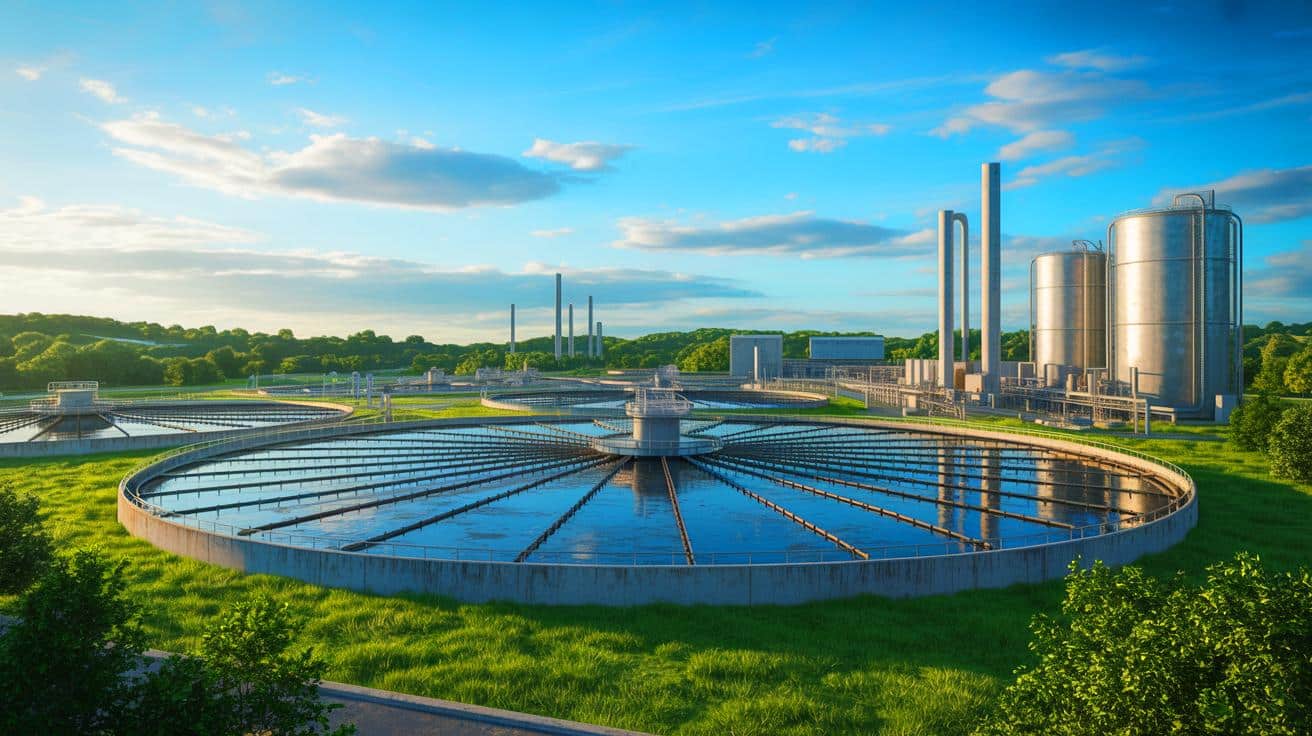IN A NUTSHELL
🔍 Princeton-led study reveals wastewater plants emit more greenhouse gases than estimated.
📊 Plants contribute to 2.5% of U.S. methane and 8.1% of nitrous oxide emissions.
🚗 Researchers used a mobile lab to measure emissions from 96 plants over 14 months.
♻️ Findings highlight potential for economic benefits from capturing methane as a renewable energy source.
In a striking revelation, a Princeton-led study has found that wastewater treatment plants in the United States emit significantly more greenhouse gases than previously estimated. The research highlights the substantial gap between official estimates and actual emissions of methane and nitrous oxide, two potent contributors to climate change. The Environmental Protection Agency’s figures have been significantly challenged, as the study indicates that emissions may be nearly twice what was initially recorded. This discovery raises critical questions about the environmental costs associated with wastewater management and underscores the need for targeted interventions to mitigate these emissions without requiring a complete industry overhaul.
Revealing the Hidden Emissions
For years, wastewater treatment plants have operated under the radar in terms of pollution scrutiny. The new study conducted by Princeton University reveals that these facilities are responsible for far more greenhouse gases than previously thought. Specifically, the research indicates that these plants emit 1.9 times the nitrous oxide and 2.4 times the methane that the Environmental Protection Agency (EPA) had estimated. These gases are significant contributors to global warming, with methane and nitrous oxide driving approximately 22 percent of the warming since the mid-19th century.
The implications of these findings are profound. Wastewater plants contribute around 2.5 percent of U.S. methane emissions and 8.1 percent of nitrous oxide emissions. The research not only exposes the magnitude of the emissions but also highlights the potential for specific improvements. Notably, the majority of the emissions come from a limited number of facilities, suggesting that targeted enhancements could substantially reduce the overall impact without necessitating widespread changes across the industry.
Innovative Approaches to Measurement
The researchers employed innovative techniques to gather accurate data on emissions. Using a mobile laboratory known as the Princeton Atmospheric Chemistry Experiment, the team conducted extensive fieldwork over 14 months. This mobile lab, an electric vehicle outfitted with advanced laser-based systems and sensors, enabled researchers to measure emissions from 96 different wastewater plants across the country. These plants collectively process about 9 percent of the nation’s wastewater.
By driving over 52,000 miles and visiting plants during various seasons, the researchers captured emissions under different environmental conditions. This comprehensive approach allowed for a more accurate depiction of the situation. The results showed significant fluctuations in emissions based on factors like rainfall, temperature, and microbial activity. This variability underscores the complexity of accurately assessing emissions from wastewater facilities, and points to the need for adaptive management strategies.
Tackling Infrastructure Challenges
One of the critical issues identified by the study is the outdated infrastructure of many wastewater treatment facilities. Most of these plants are decades old and municipally operated, which presents challenges for managing emissions. As noted by Mark Zondlo, a professor of civil and environmental engineering at Princeton, these facilities have undergone numerous upgrades, making them difficult to evaluate comprehensively. The study’s approach of examining a wide array of facilities over various timeframes provides a clearer picture of their emissions.
Z. Jason Ren, another professor involved in the study, pointed out that operators often lack detailed guidance on managing emissions. Many operators are aware that they have emissions but are uncertain about the levels. The researchers hope their findings will foster collaboration with plant operators to identify and mitigate emissions more effectively. Moreover, Ren suggested that reducing greenhouse gases could also yield economic benefits, particularly since methane can serve as a renewable energy source.
Future Implications and Opportunities
The findings of this study have far-reaching implications for environmental policy and the management of wastewater facilities. With the study published in Nature Water, the researchers aim to draw attention to the overlooked environmental costs associated with wastewater treatment. The data suggests that by focusing on a relatively small number of facilities, significant reductions in greenhouse gas emissions could be achieved, providing a practical pathway for policymakers and plant operators.
Moreover, the study highlights the potential economic benefits of reducing emissions. Methane, while a harmful greenhouse gas, can be captured and used as a renewable energy source, offering a dual benefit of environmental protection and energy production. This presents an opportunity for facilities to not only comply with environmental standards but also to potentially profit from their emissions management strategies.
As the world grapples with the challenges of climate change, the insights from this study offer a valuable perspective on an often-overlooked source of emissions. The question remains: How will policymakers and industry leaders leverage this information to drive meaningful change in the wastewater treatment sector, and what steps will be taken to ensure these facilities contribute to a cleaner, more sustainable future?
This article is based on verified sources and supported by editorial technologies.
Did you like it? 4.5/5 (21)

